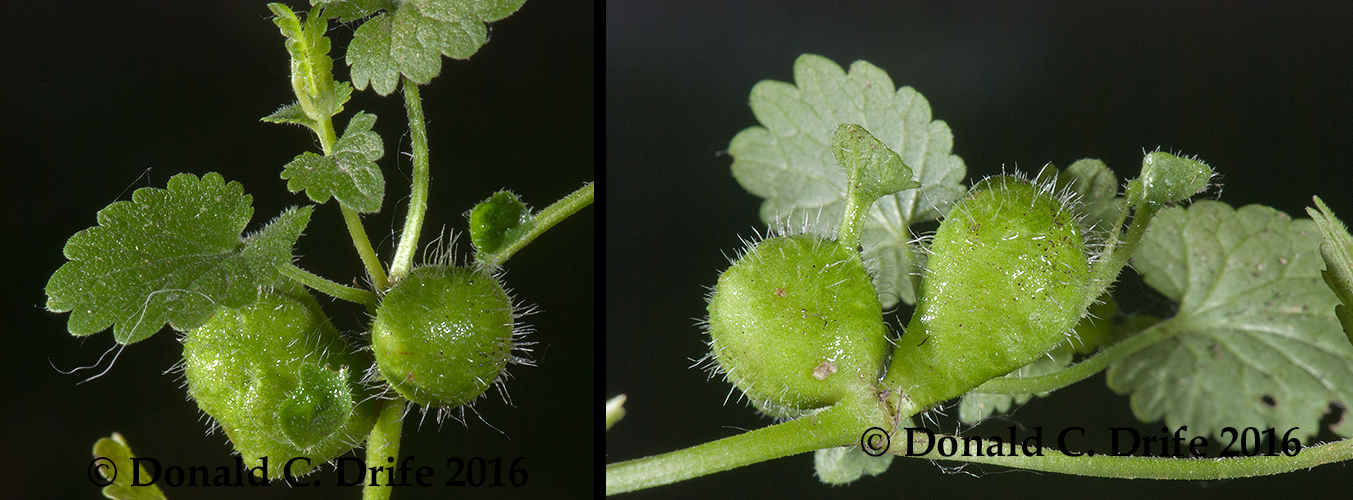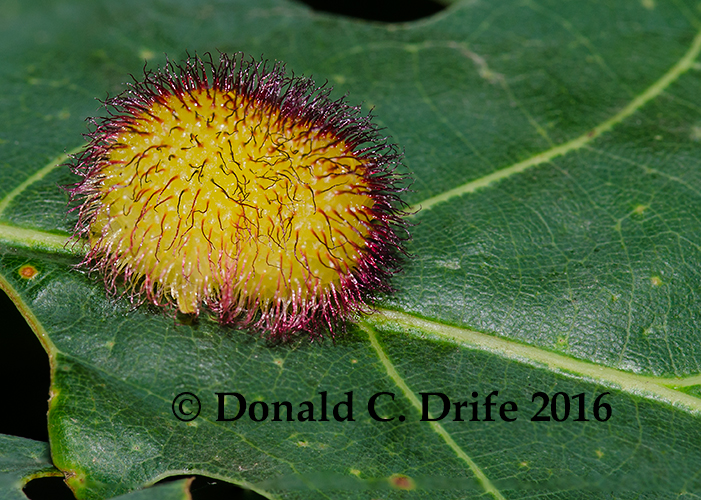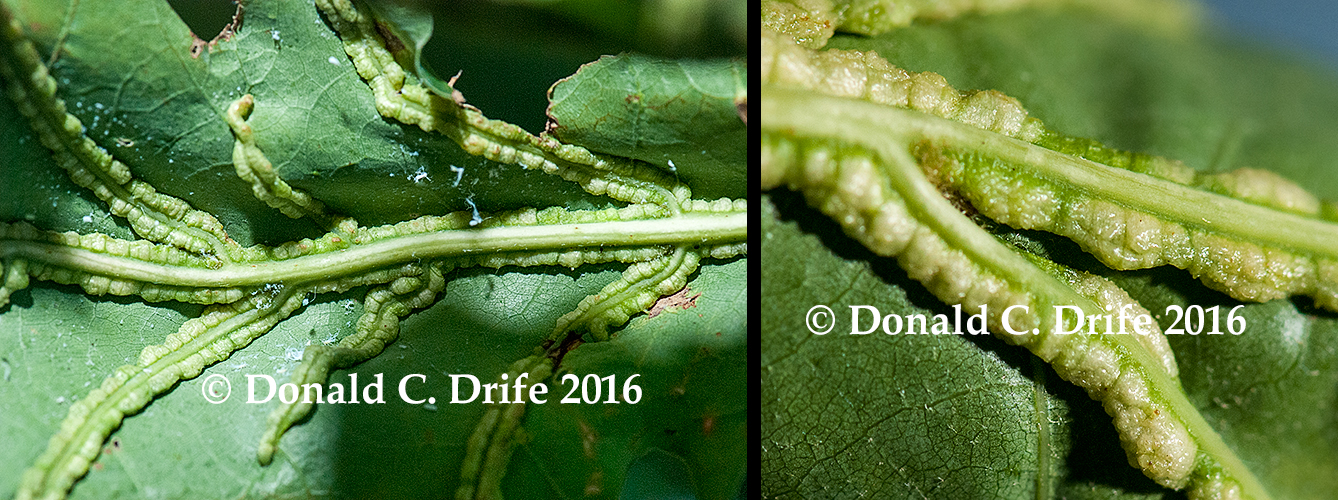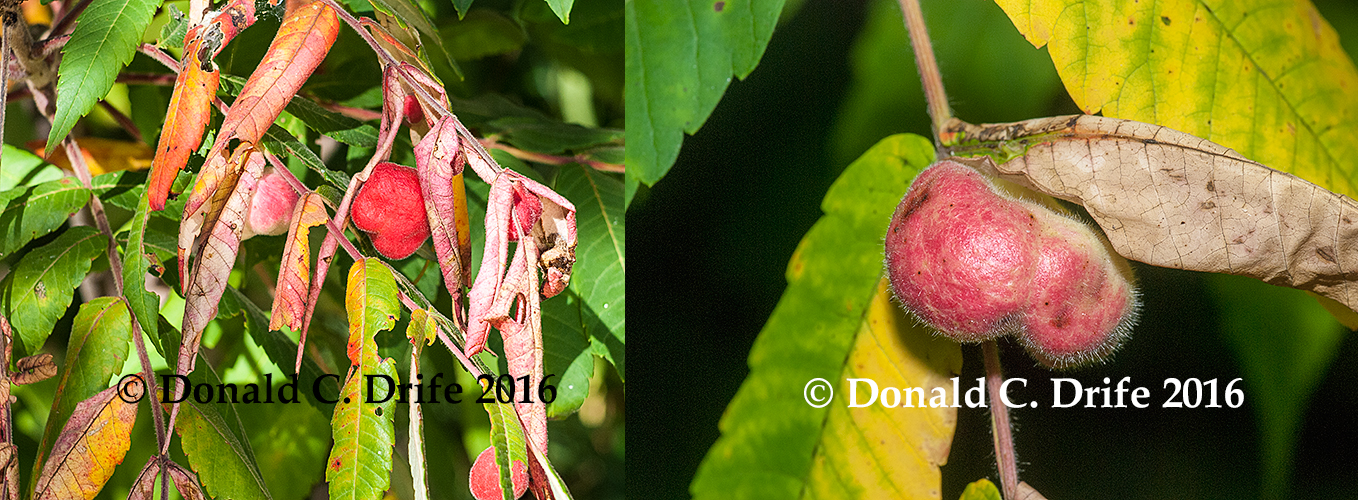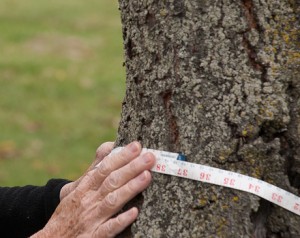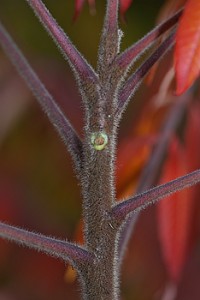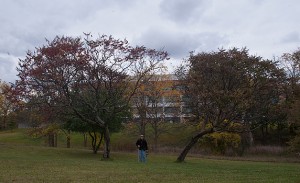Gall are formed by insects laying eggs or feeding on a plant. In response to this damage the plants produces growth hormones resulting in abnormal cell development. Galls normally occur during the plant’s most active growth time. Other parts of the plant remain unaffected.
Creeping Charlie Gall (Liposthenes glechomae) is a grape-size gall that develops on Ground Ivy (Glechoma hederacea) which is also called Creeping Charlie or Gill-over-the-ground. The gall is formed when a cynipid wasp lays an egg in the leaf or stem of the plant. If you cut one of these galls open you will find a small white larvae. Cynipid refers to all members in the insect family Cynipidae. The wasp does no real harm to the plant so it cannot be used to control Creeping Charlie. Both the wasp and the weed are imported from Europe.
Another Cynipid wasp gall is caused by the Hedgehog Gall Wasp ( Acraspis erinacei ). It was on a White Oak (Quercus alba) leaf. This is the agamic generation (they reproduce without males). The female generation emerges from this gall and lays her eggs in the leaf buds where they over winter. It is an interesting looking dime-sized gall.
The Vein Pocket Gall (Macrodiplosis quercusoruca) is caused by a larval stage of a gall midge in the family Cecidomyiidae. This gall was on Red Oak (Quercus rubra).
Sumac Gall Aphid (Melaphis rhois) is one of the few aphids that cause galls to form. This one was on Staghorn Sumac (Rhus typhina). Staghorn Sumac Aphid is one of the woolly aphids. The galls are hollow and occur along the leaves.
Copyright 2016 by Donald Drife
Webpage Michigan Nature Guy
Follow MichiganNatureGuy on Facebook

